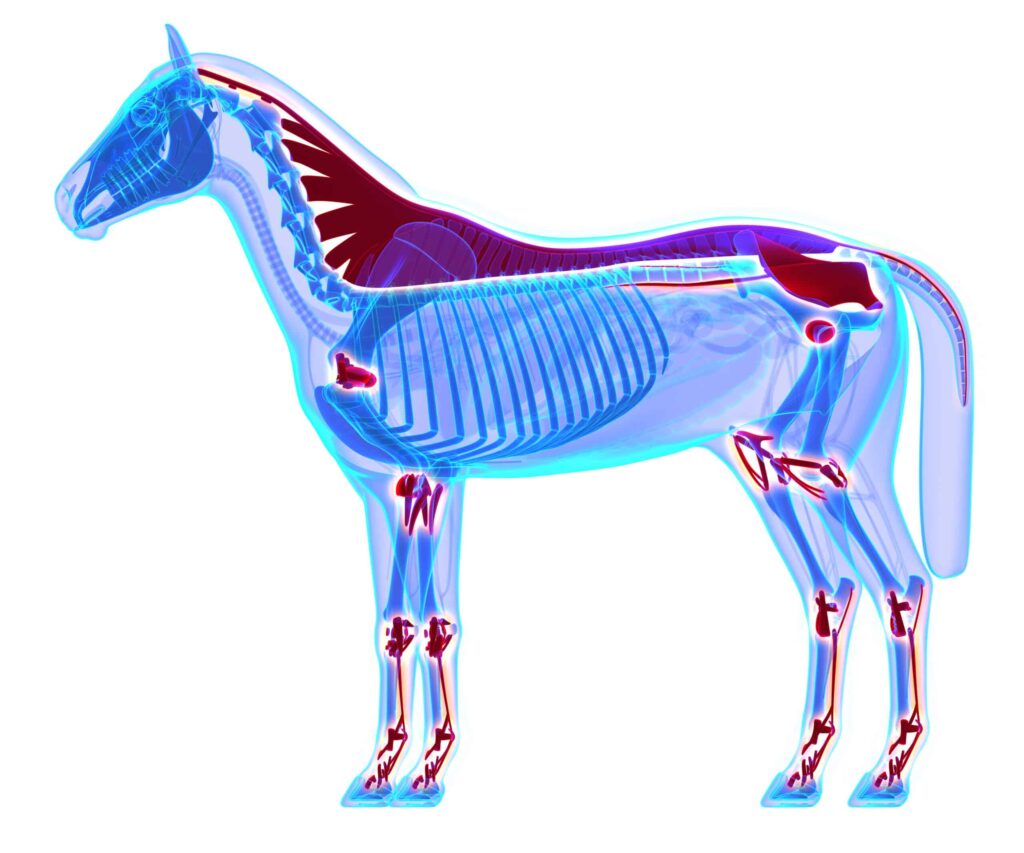Reproduced from a blog written by Louisa Maria Cuomo, here she describes some of her findings and, what the deceased horse can tell us about tack fitting
I was lucky enough to spend 3 days dissecting a horse with the amazing Sharon May-Davis, who a is passionate and dedicated living legend in the area of equine anatomy, biomechanics, musculoskeletal system and dissections. She is also widely known as a therapist and scientist of the equine species. For over 35 years, Sharon has been travelling all over the world to work with therapists, trainers, riders and top competition horses in order to get a deeper understanding of the horse and to improve its well-being.
I wasn’t sure how I would feel about dissection of a whole horse. I have done parts before but not a whole body. I was worried I would be upset or not cope with the smell. Luckily there was no bad smell as it was very cold in the barn, and once I had got my head around why I was there I managed to shut off a bit from the emotional side of what we were doing and focus on the great learning opportunity in front of me. Sharon and her team are so hugely respectful of the horse, and laid flowers on him – it is very dignified.
The horse we had was a very big bay 17hh+. He had been very much loved by his owner – nicely shod, well maintained teeth, and a nice healthy weight. All we knew about him was he had suffered an unexpected trauma. We started at the head end working out his age putting him in his early teens. What was humbling throughout was how much we can continue to learn even after the horse has passed. There was so much the horse could tell us!
What was very interesting in the face, was understanding that muscles don’t always connect to bone they connect to ligaments and fascia. Fascia is noticeable throughout the whole body. A shiny, silver film covering every part of the horse’s body. It makes you realise how much horses benefit from myofascial release when there is a block, as it is connected throughout.
There were a few major areas that stood out for me throughout the dissection – some were mind blowing and I think about them daily when I work with horses. Obviously the fascia and its significance throughout the body. But, a major reminder to me was the cartilage behind the scapula – it was so thin.
My finger nail is about the same in thickness as the cartilage. If you fit a saddle without giving the scapula room you have the strong potential of damaging that thin cartilage forever. It is not something that will grow back and will be painful for the horse. Saddles fitted too tight in front cause a short stride because the horse is protecting its scapula and the fragile cartilage. The practice of inserting many shims, or much flocking in the front of saddles to stop them from moving forwards are causing more damage than saddlers may realise – it’s not a good thing to do to a horse.

Experimenting with the effect of bits and nosebands on hind limb flexion
The other 2 major things that speak to me every day was the effect of different bits and nosebands on the deceased horse. This is quite unbelievable. We placed different bits in the cadaver horse’s mouth while each of us flexed the hind leg.
We tried several bits from the curb to a few different snaffles and applied pressure on the horse’s mouth as you would when you ride while we assessed the fluidity of the hind leg flexion. Some of us were thinking the curb may have the biggest negative impact. Believe it or not, the bit that stopped us from being able to flex the hind leg almost completely was the single jointed snaffle (nut cracker effect). It was significantly harder to get any flexion.
After trying bits we tried nosebands – we have all read research studies about noseband tightness and types. Well it is absolutely true to say in a deceased horse with no living feeling – the flash noseband has the most detrimental effect on the horse’s hind leg flexion. It was shocking to feel the impact it has. Whatever you take from this – if you can ditch the flash noseband please do it. Your horse will thank you and he will definitely be able to come through from behind with more comfort and ease.
There was so much to learn from this beautiful animal and we were all so humbled by his teachings. Sharon revealed a broken rib and much deep muscle damage throughout the back end of the horse. It was very sad but also an amazing experience to gradually understand more about why he was there with us and not with his loving owner.
